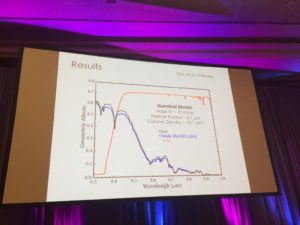
Figure from Gao’s talk, showing the spectrum of a planet before (blue and black lines) hazes and after (red line). The molecular features are almost completely wiped out by the hazes.
On day two of the AAS 229th meeting, I attended the morning session on exoplanet characterization and theory, which focused on atmospheric characterization. Several great talks, but one that made an impression on me was Peter Gao‘s presentation on sulfur hazes in hot Jupiter atmospheres.
Gao discussed work from Kevin Zahnle at NASA Ames showing that UV photolysis can transform even small amounts of gaseous sulfur in a hot Jupiter’s atmosphere into significant amounts of polymer haze. Something that has become a running motif in exoplanet atmosphere studies, these hazes discombobulate the spectrum of light emerging from a planet’s atmosphere, completely masking the signatures of other atmospheric components. This is bad news if, say, you wanted to determine the composition of a planet using light reflected from its atmosphere.
In the afternoon, I was fortunate to attend Sean Carroll‘s plenary talk “What We (Don’t) Know About the Beginning of the Universe”. It was a fascinating tour of all the different ideas about the origin of the universe, including The Big Bounce, baby universes hidden inside black holes, and the idea that the universe may have no beginning and no end. The best part of the talk, for me, was the end, when Carroll showed us a stern letter from a 10 year old skeptic sent to him in a response to an NYT article in which Carroll was quoted:
I Don’t know if you Exist But I Do! I bo not Agree with your Articl and I Do not Beleave that “MOMBO-JOMBO” if you do … Well! it’s Disturbing thought But I know How to Deal with it! I will Not let the Wolb Disiper under My Nose But if you Do I cant say I’m sorry!
Sincerely
a ten year old who knows a little more than some Pepeol!
George Wing
ps. some peopl Have a little to Much time.
Just brilliant!
Unfortunately, I had to depart for home shortly thereafter, so I’m missing the rest of the meeting. So here endeth my blog series on the meeting. Our fall semester at Boise State starts next week, though, and I plan to have weekly (maybe even semi-weekly) updates on the blog, so stay tuned.
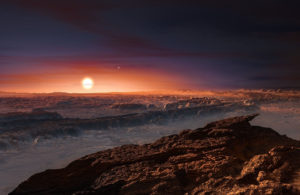 A very active and engaging morning session on detecting
A very active and engaging morning session on detecting 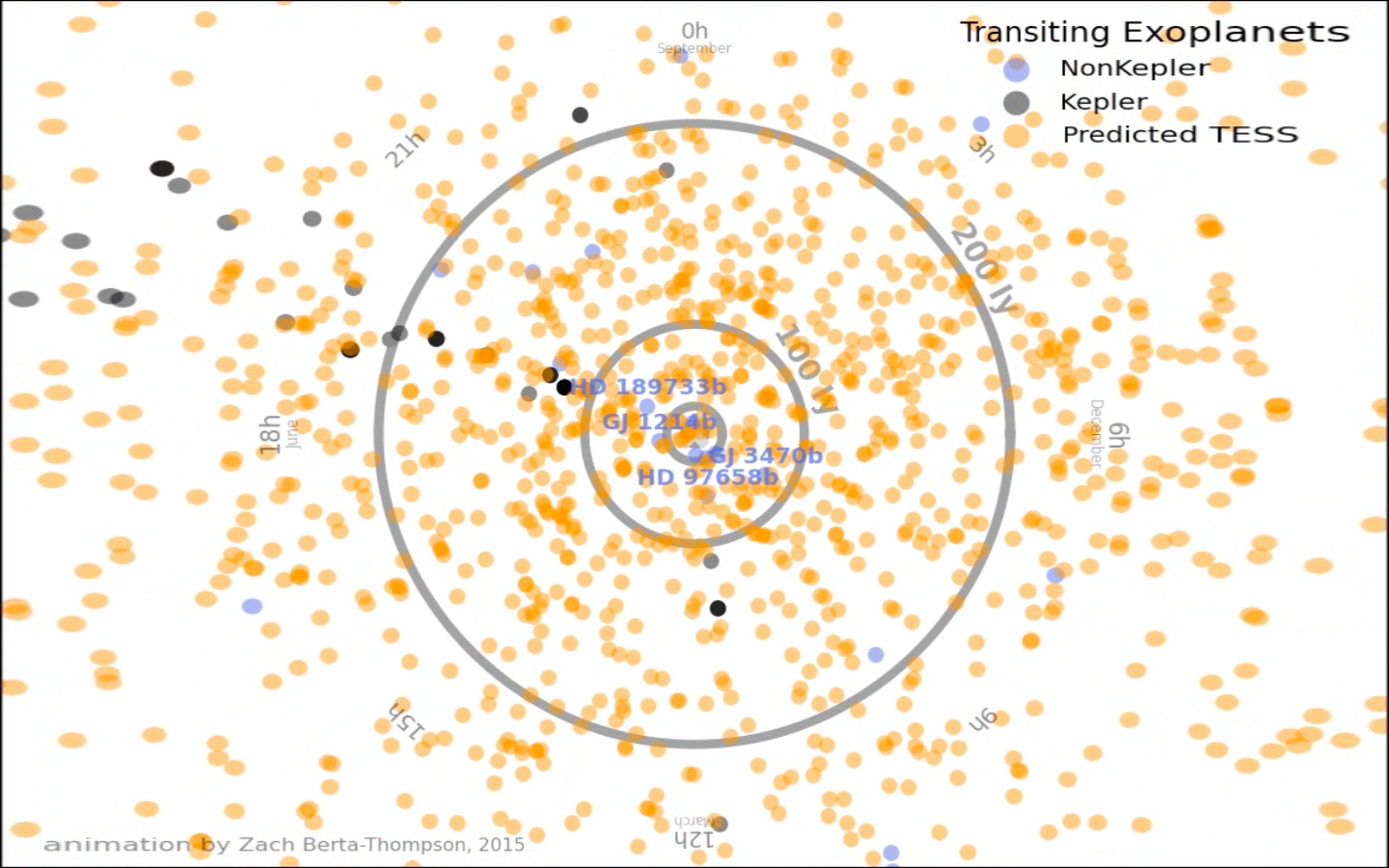
 I’m at the beautiful
I’m at the beautiful 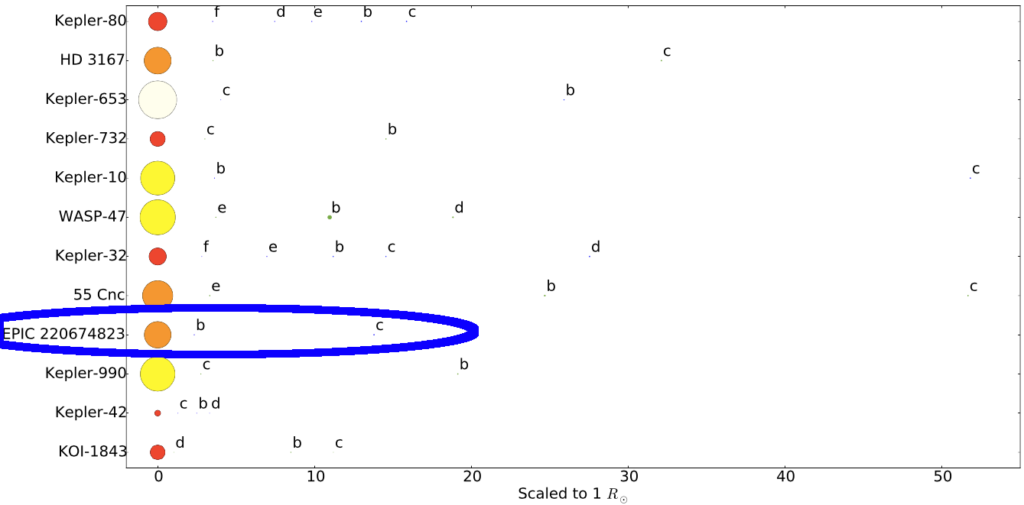
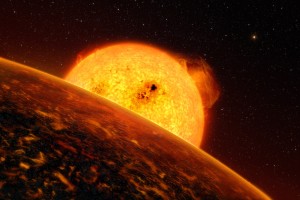
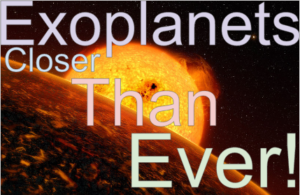
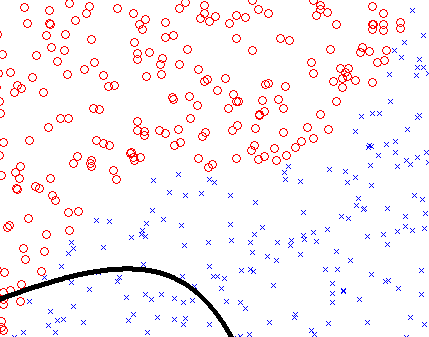

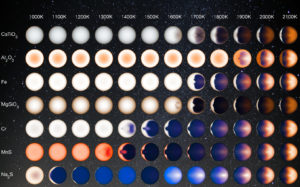

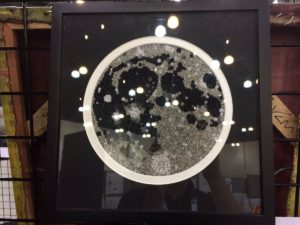
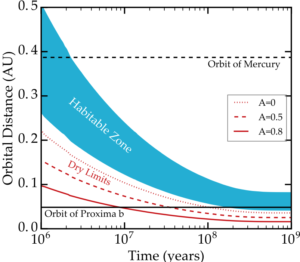
 We had a brilliant time
We had a brilliant time